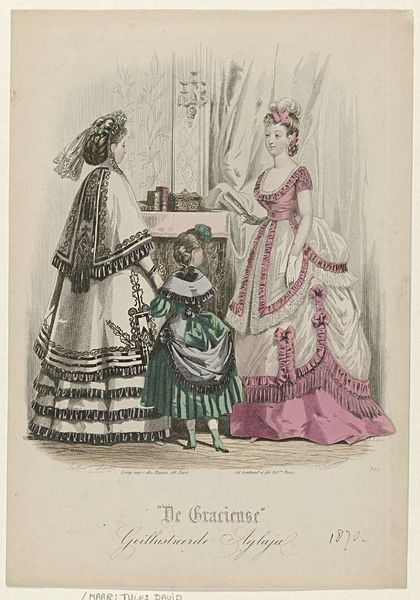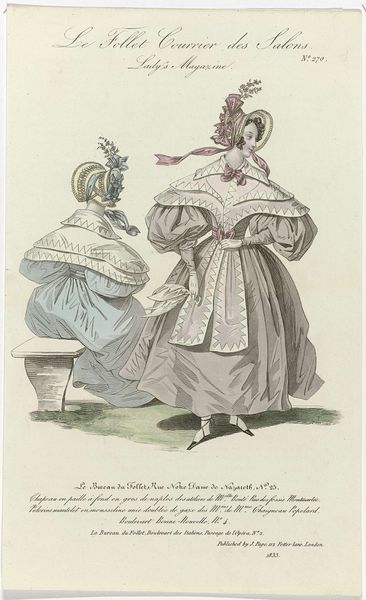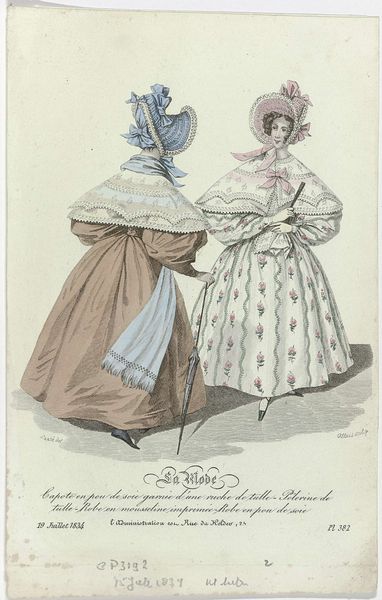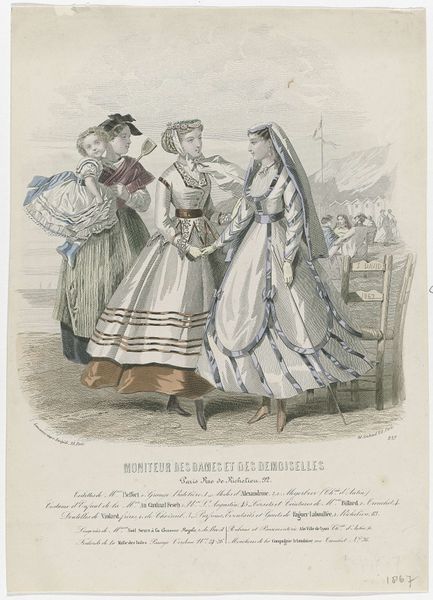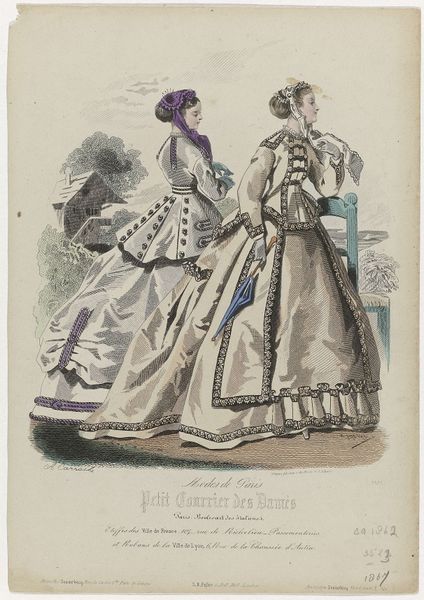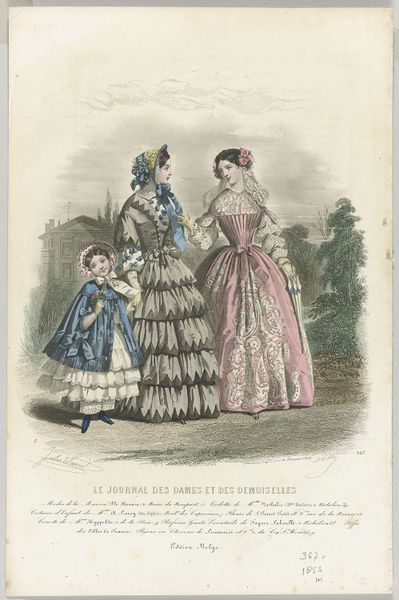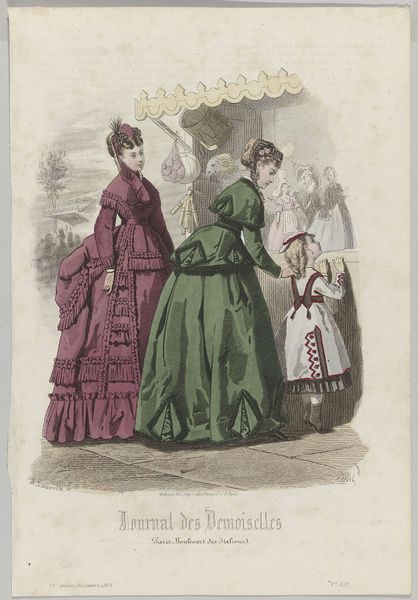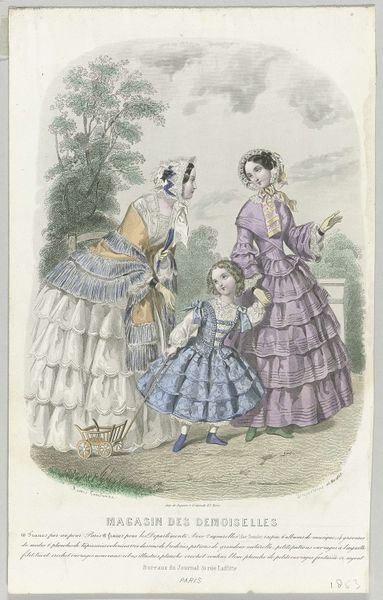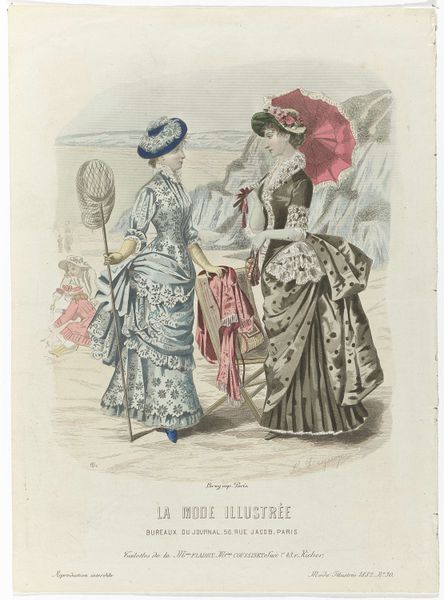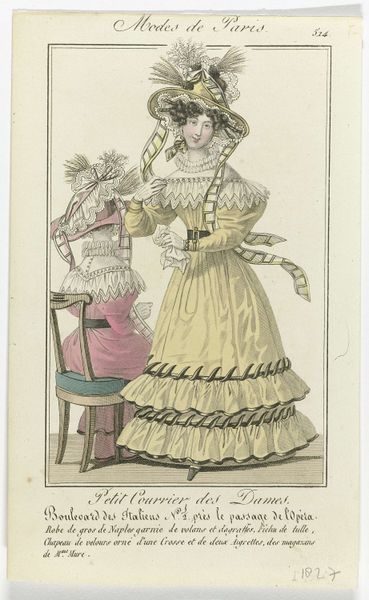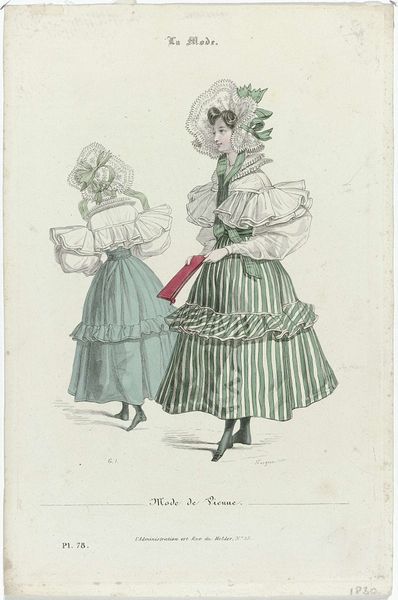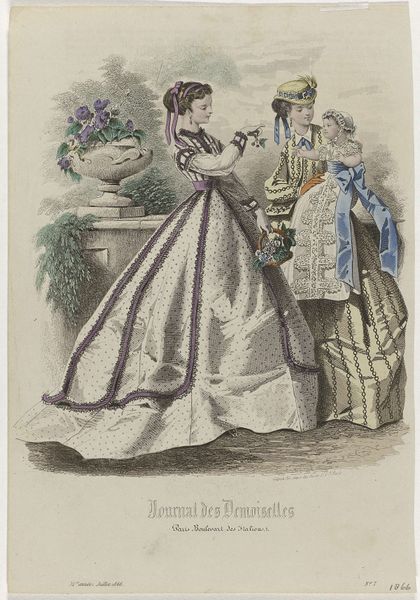
Dimensions: height 322 mm, width 244 mm
Copyright: Rijks Museum: Open Domain
Editor: This is an 1871 lithograph titled "Le Moniteur de la Mode, No. 1006," attributed to Emile Prèval. The print feels like a snapshot of Parisian life, showcasing current fashions. What's striking is how meticulously each garment and hairstyle is rendered. How do you interpret this work in its historical context? Curator: Given its title, "Le Moniteur de la Mode," we can read this not just as art but as a direct piece of media, actively shaping fashion trends. Consider the post-Franco Prussian war context. The choice to depict opulence, even in print, signifies a conscious rebuilding of French identity through fashion. How do you think this print functioned within that rebuilding? Editor: It makes sense that it acted almost like propaganda, setting an example to follow. Seeing this as less "art" and more "media" shifts my whole perspective. Curator: Exactly. Think about the magazine itself, "Le Moniteur de la Mode." Who was its target audience? How did this print circulate, and what did it mean to have access to it during this period? Was this accessible to every woman or were the working classes excluded? Editor: Probably targeted to wealthy women... Access was a status symbol itself. So, the magazine reinforced social hierarchies, influencing fashion and signaling wealth. Curator: Precisely. These images naturalize specific codes of conduct. Think about the female gaze here too: are these women consumers of images or empowered individuals. Editor: I’m now seeing the artwork with a new dimension, where an aesthetic image can be viewed and decoded with a social analysis perspective. Curator: Understanding the intended audience and its sociopolitical climate completely alters our understanding of its imagery and function. I’ve enjoyed sharing with you today.
Comments
No comments
Be the first to comment and join the conversation on the ultimate creative platform.
